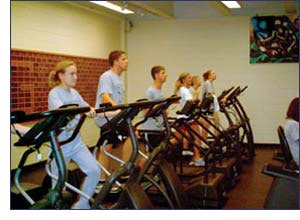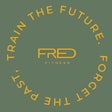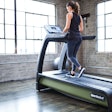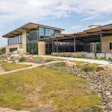 Photo of students using the fitness center at Buffalo Grove (Ill.) High School
Photo of students using the fitness center at Buffalo Grove (Ill.) High School
Back-to-back 7-3 seasons followed, as did another winning campaign -- one that involved convincing Greenfield, Iowa, residents that a better weight room would help the school continue to play better football. Today, the Nodaway Valley campus boasts a 3,300-square-foot weight room with state-of-the-art cardiovascular and strength-training equipment, including rubber-and- hardwood platforms embossed with the school logo for squats and Olympic lifts. Built entirely through private donations and in-kind contributions, the facility is estimated to be worth at least $60,000, but cost roughly half that out of pocket, according to Stensland. "Parents realized that we began to win because of the weight training -- by being in shape and not getting injured," he says. "From there the idea has taken off, and now the entire community is starting to realize that to compete on this level we need to have a state-of-art facility."
Such awakenings are taking place all over the nation's prep sports landscape, with high school administrators devoting time, space and money to beefing up weight-training facilities and their adolescent occupants like never before. In many cases, such facilities have been shaken from a state of decades-long atrophy. Millville (N.J.) High School officials in November unveiled Thunderbolt Iron Works Fitness Center, the $50,000 renovation of a former campus maintenance building. Housing more than 7,300 pounds of resistance in the form of weight plates, weight stacks and dumbbells, the updated facility replaces makeshift lifting stations set up in a small equipment room and then an old wrestling room over the past 30 years.
At Archbishop Spalding High School in Severn, Md., weight lifters sweated through workouts in a pair of storage rooms and an abandoned garage while ground was broken earlier this year on a 2,200-square-foot glass-enclosed fitness room that will eventually overlook a new football stadium (coming in phase two).
Back in the 1970s, coaches at Muskego (Wis.) High School were pumped when their Sears-issue bench and cement-filled plastic weights tucked into a locker room corner gave way to an alternative space (with the all-too-common custodial history) that could better accommodate the school's lone Universal machine. "There was no painting done, no record boards, but we loved it," says Mike Nitka, a former MHS assistant football and head wrestling coach and the school's current director of strength and conditioning. "There was very little supervision, the equipment was very humble, but at the time we thought that was state of the art."
Now, a quarter-century later, Nitka presides over a 4,200-square-foot facility awash in Muskego red, white and black, and pulsing with his pupils' popular-music selections. On the room's black rubber flooring rests some of the latest available cardiovascular equipment, selectorized circuit-training machines and Olympic lifting platforms. "It's beautiful," Nitka says.
Such scenes -- complete with the sights of school colors and team logos, and the sounds of booming bass lines and beeping target-heart-rate monitors -- have come to represent the modern high school weight room. It is an environment once reserved for major college football programs and private fitness centers.
For many administrators, coaches, trainers and physical education instructors, renovating a weight room or building one from scratch is a once-in-a-lifetime opportunity. Archbishop Spalding athletic director Lee Dove makes no apologies for the length of his weight room wish list, one that includes recumbent bikes; treadmills; elliptical trainers; a dual-cable cross station; a lat pulldown and row machine; bench, squat and deadlift stations; hip machines; incline and decline benches; shoulder and chest presses; neck machines; a seated pectoral fly machine; a bicep curl machine; a triceps extension station; leg curl and leg extension machines; ab curl and back extension stations; dumbbells; curl bars; and mats.
"Those are just some of the general things we feel we need to have," Dove says. "Obviously, we'll scale back as we need to, but when administrators ask you to tell them what you want, you go for the Cadillac before you settle for the Pinto."
It's little wonder, then, that fitness equipment manufacturers view the high school market with increased respect these days, even going so far as to price entire lines of equipment to meet high school budget demands. "It's definitely our fastest-growing segment," says a representative of one major equipment manufacturer. "Ten years ago, we didn't even look to that market, because unfortunately they were people who really didn't have a whole lot of money. But what we've seen lately is booster clubs actively generating money. PEP [Carol M. White Physical Education for Progress] grants have been a real shot in the arm for high schools. We've gone from the days when high schools could afford to buy a few Olympic bars and dumbbells to where they're buying $50,000 worth of cardio equipment in one shot. These people are like kids in a candy store."
Joe Scarpino, who heads the physical education department at Buffalo Grove (Ill.) High School, waited 27 years for the chance to overhaul his school's fitness facilities, receiving in 2000 what amounted to carte blanche from his principal. "He called me into his office and said, 'I go out and watch our kids' games, and they are being manhandled on the field. They're getting knocked around, and I'm afraid they're going to get hurt. Go out there and build us a new weight room,' " recalls Scarpino, who assembled a six-member committee that spent six months visiting existing facilities -- from other high schools to health clubs to hospital wellness centers -- and determining what equipment best fit Buffalo Grove's training needs based on breakout interviews with varsity coaches.
After an additional 18 months of fundraising, the school's existing 5,000-square-foot fitness area was gutted (including the removal of asbestos flooring) and filled with cardio equipment (complete with contact heart-rate monitors) and interfacing circuit-training machines on one half of the room, and heavy-duty plate-loaded pieces on the other -- at a final cost approaching a quarter-million dollars. "We had 5,000 non-athlete, afterschool student visits the first year we were open. The second year, we had 7,600 visits," Scarpino says. "Based on those numbers, we applied for and won a PEP grant to the tune of $418,000."
Because the BGHS facility was completely paid for by the time it opened its doors in 2001, the PEP grant windfall was funneled to the district's remaining five high schools to invest in the same type of fitness technology that allows exercisers to track personal workout information through equipment-mounted monitors, personalized Internet programs and computerized printouts.
But far more basic choices also faced the BGHS research team initially -- from wall-paint color (neutral cream) to mirror placement (only on the free-weight side of the room, where athletes prefer to train) -- with the goal of creating the most non-threatening environment possible. "One of the things we discovered in our research was that noise was a factor that kept kids out of weight rooms," Scarpino says. "Quieter health clubs had more use during the same times of day as other facilities we visited. As a result, all of our weight plates are urethane coated."
For Scarpino, creating lifelong fitness buffs was as important as creating buff high school athletes. That's why such amenities as ceiling-hung TV monitors and equipment-mounted FM stereo jacks were included in the BGHS specifications. "We wanted to give the kids a health club experience in high school," Scarpino says. "We talk about transitional skills. If you're going to join a health club after high school, these are the kinds of pieces of equipment and the kinds of activities that you should be familiar and comfortable with. That was the whole deal: Make this so appealing to the kids that they would want to continue to feel good."
Coppell High School near Dallas needn't worry as much about the intimidation levels of novice lifters or deconditioned students. It has set aside a colossal 14,400 square feet of workout space solely for boys and girls competing in any of the dozen sports sponsored by the school. Non-athlete students, meanwhile, may train in a 6,000-square-foot weight room that athletic teams abandoned six years ago.
Strength coach Eric Jones, who designed the new facility based on visits to the University of Oklahoma and Texas A&M, as well as his football playing days at Michigan State, originally envisioned a 40,000-square-foot space before construction budget constraints reined him in. Equipment includes 12 platforms used for Olympic lifts; another 12 barbell stations; a back circuit; leg curl, extension and press machines; hip machines; a cable station; and a rubberized area designated for dumbbell exercises. "Space was the big factor in the design, considering the number of athletes who use the weight room," says Jones, adding that up to 130 athletes can safely work out at any given time. The Coppell football program, for which Jones serves as defensive line coach, boasts 300 players alone, though typically 60 to 80 players are programmed for weight-room use an hour at a time.
Coppell's varsity football team, which hadn't made a playoff appearance since 1963, has gone to the postseason five years running, thanks in no small part to the "strength, speed and quickness" players gained during all those hours in the new weight room, Jones says. Adds John Crawford, Coppell's athletic director, "One of the key ingredients to having a competitive program, whether it's boys or girls and regardless of what sport it might be, is strength training. The facility that we have allows us to put as many athletes as we conceivably need to in there during a given season, and do it safely. In those regards, it's a tremendous asset for our school. It's not something that we're going to come back and ask to add on to later. It was done right the first time."
Joe Lepsis, strength coach at nearby Wylie High School, agrees that it's not just football teams that stand to gain from an investment in physical fitness. "The thing that's changed here, and I think it has changed in a lot of places, is we're now trying to get all the sports doing the same types of explosive lifts," says Lepsis, who oversees a 4,200-square-foot weight room devoted solely to student-athlete use. "Having a weight room that can accommodate that type of program makes it a lot easier sell. It's one thing trying to get the coaches to buy into it and it's another thing to have the facility in which you can do it. Once we got that facility, all the coaches said, 'Here, take my kids.' And it has made a difference. Every six weeks we test our kids, and we've seen noticeable gains in all sports."
Another flag-bearer in the Olympic-lifting movement is Pat Mediate, strength and conditioning coordinator at Greenwich (Conn.) High School and a current National Strength and Conditioning Association board member. However, Mediate tweaks his athletes' routines to include movements that transcend mere snatches, cleans and jerks. "We don't do a lot of just standing there and lifting weights for muscle," Mediate says. "The whole thought process now is performance movement. We do a lot of plyometric complex training, where we do a weight-lifting exercise followed by a box jump or a medicine-ball throw." That philosophy has served Greenwich well in terms of increased victory and decreased injury totals, adds Mediate, whose 3,000-square-foot facility -- housing six Olympic platforms, six squat racks, seven plate-loaded units and 15 selectorized machines, as well as heart-monitoring cardio equipment and even video equipment (for reviewing lifting technique) -- is the envy of more than a few small colleges in and around Connecticut. "Before we had this weight room, we had Universal equipment, but we also had kids lifting on their own," he says. "We weren't jumping enough. We got beat by teams that were smaller than us but could jump higher. That's when we said, 'We need to get going here.' "
So how does a school get going? Equipping even a modestly sized (by today's national standards) weight room of 3,000 square feet could easily cost $100,000, according to manufacturers. And while four key components -- selectorized circuit-training machines, cardio equipment, Olympic-lift stations and stretching areas -- have become commonplace in the modern high school weight room, the personal preferences of those who will supervise the room still influence equipment selections and layout decisions.
Scarpino included an individual stretching apparatus at Buffalo Grove, while Muskego's Nitka, who thinks equipment should accommodate a lot of athletes in a short amount of time, would rather his students stretch out the old-fashioned way, on wrestling mats. Eighteen hardwood Olympic platforms dominate the space within the Wylie High School weight room, because Lepsis has made Olympic lifts a point of emphasis.
Choosing pieces of fitness equipment from an ever-bulging marketplace can be a workout in itself. Lepsis priced Olympic platforms from $800 to $4,000, before selecting $1,500 models. Nitka, too, has seen wide price ranges, and warns of the perils of equipping weight rooms on the cheap. "People are going to say, 'Why spend $6,000 on a treadmill when you can go to Sears and buy one for $800?' Well, I'm working out 300-pound kids, and they will trash that $800 treadmill in a month," he says. "Our kids train incredibly hard under my supervision, and I can't go with anything that might fall apart and injure them. I can't afford to buy stuff that won't last."
According to Ken Reed, director of the Center for the Advancement of Physical Education, the spending patterns of PEP grant recipients has never been tracked. But one fitness equipment manufacturer estimates that perhaps half of all grant monies awarded ($69 million to 237 schools in 2004 alone) goes toward the purchase of fitness equipment. In fact, Reed guides the discussion toward talk of "fitness rooms," rather than "weight rooms." "Usually, weight rooms are associated with athletic teams," Reed says. "We encourage that investments are made for the student body in general, not just student-athletes."
Save converting an athletic field to synthetic turf, equipping a state-of-the-art fitness room may well represent the single greatest investment a high school administrator will ever face. However, the very fact that coaches and athletes in all sports are becoming sold on the benefits of weight training makes selling these facilities to school boosters that much easier, according to Jerry Diehl, assistant director of the National Federation of State High School Associations. "You can amortize that investment over all of your athletes, because almost every sport that you have needs some kind of weight training," he says. "You can sell that idea a lot better if you're doing it over, say, 15 sports and 900 athletes at your high school."
Add the general student body to the equation, and it makes even more financial sense. Says Buffalo Grove's Scarpino, "When we cycle our entire school -- 2,000 kids -- through here every semester, the cost per pupil drops to next to nothing, compared to other academic areas."
Delavan (Ill.) High School administrators have succeeded in blurring the lines between physical education and sport- specific workouts with "Athletes P.E." -- which places heavier emphasis on aerobic and strength training than what is found in the traditional P.E. curriculum. "It is important for students to develop an interest in physical activity early on," says Delavan principal Andrew Brooks. "And in most P.E. classes, what are they doing? They're playing basketball. They're playing softball. And is that as much physical activity as they need? I would say no."
Athletes P.E., which uses body-fat analysis and other measures to compare student goals with end results, is expected to hit full stride once the school completes its new fitness facility -- a project that encountered a brief setback when the National School Fitness Foundation, a Utah-based nonprofit organization from which funding for brand new fitness equipment was supposedly forthcoming, filed for Chapter 11 protection earlier this year. It was then that Delavan turned to some 1,900 alumni and the community at large in search of donations, raising (as of this writing) $80,000 of the target $105,000 needed for the facility's construction and equipment. In appreciation of that response, the new facility will be open to community use in the mornings and evenings. "In the smaller towns, everything revolves around the high school," Diehl says. "If they don't have a community center, this is a nice way to have a fitness center that's available to patrons residing in the school district."
Mediate, Jones, Lepsis and Nitka, who served as NSCA vice president when the association published its weight room layout guidelines (available at nsca-lift.org), represent another increasingly common fixture in the modern high school weight room -- the certified strength coach. Though rarely hired under such a title, physical education staffers willing to pursue certification often assume that role. Dove has one P.E. instructor currently in pursuit of certification, while Scarpino is overseeing the certification process for his entire staff. "A coach can't just open up the door, turn on the lights and say, 'Go lift,' while he or she checks the mail," Nitka says. "There has to be a man or woman in there who has a philosophy and will train athletes safely." Adds Mediate, "It's not about telling someone how many exercises to do, it's about how you teach those exercises based on your knowledge of the movement."
It's these individuals who often emerge as their schools' true visionaries in terms of fitness facilities. Nitka, for one, lobbied hard for his latest expansion, made possible by convincing parents armed with sledgehammers to spend a Saturday knocking down two cinderblock walls, but he already has his sights set on the next growth spurt -- the annexation of an adjacent gym space made obsolete by a recent $39 million renovation of Muskego High School.
"Here's my dream," Nitka says. "I would like to teach a couple of physical education classes at the same time in there, and have a group of students on the cardio equipment -- the treadmills, the bikes, the steppers -- and another group working on the selectorized machines. And then there would be that third group, the advanced kids, working on the platforms, doing some of the more ballistic movements. There's no reason schools can't do that."
To make his dream a reality, Nitka says he is willing to lobby the community at large if he has to. "What's the number-one issue facing adolescents today? Obesity. Why are adolescents obese? They're not active. Why are they not active? They're not interested," he says. "There's something about the weight room. When I open up that door and these kids come in there for the first time, they're like, 'Wow!' Once I show them how to use all this equipment and they begin to see some results -- that reflection in the mirror or the way they feel -- they're hooked."





































